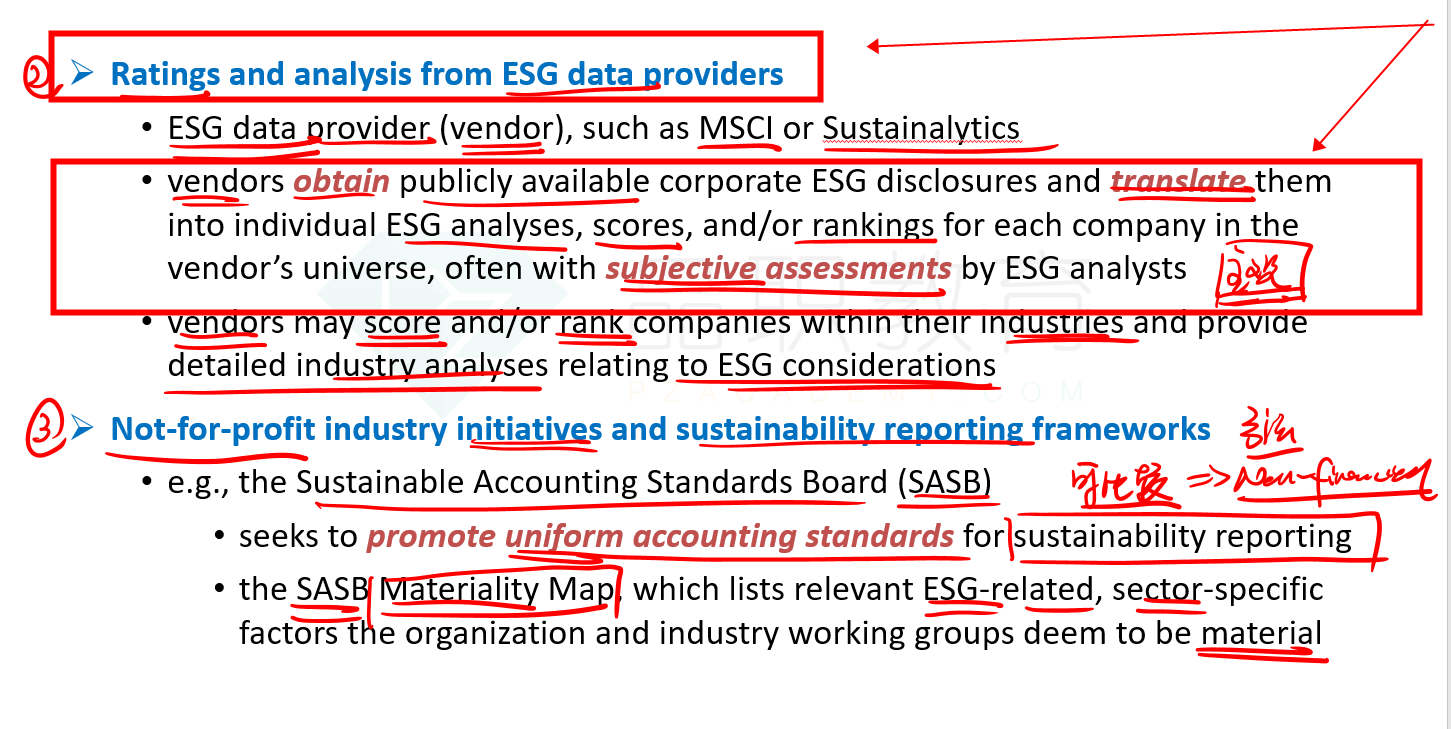NO.PZ2023040402000037
问题如下:
Theresa Blass manages the Toptier Balanced Fund (the Fund) and recently hired John Yorkton, a junior analyst, to help her research investment opportunities. Blass plans to integrate environmental, social, and governance (ESG) factors into her analysis. She is researching an equity investment in Titian International, a global steel producer. She asks Yorkton to identify ESG factors impacting Titian and estimate the equity valuation for the company. Yorkton uses proprietary methods to identify the ESG factors.
The potential problem with Yorkton’s approach to identifying ESG factors is the:
选项:
A.promotion of uniform accounting standards.
subjective assessment of ESG scores and rankings.
inconsistent reporting of ESG information and metrics among firms.
解释:
C is correct. Yorkton uses the proprietary method to identify company and industry ESG factors. This approach relies on using company-specific ESG data that is publicly available from annual reports, proxy reports, corporate sustainability reports, and regulatory filings such as the 10-K. The problem is inconsistent reporting of ESG information and metrics among firms. The level of disclosure also varies considerably among companies because ESG-related disclosures are voluntary. This creates comparability issues for analysts.
A is incorrect because the promotion of uniform accounting standards is an alternative approach used to identify ESG reports. This approach involves not-for-profit initiatives and sustainability reporting frameworks that develop a standardized framework of ESG disclosures in corporate reporting. As an example, the Sustainable Accounting Standards Board (SASB) seeks to promote uniform accounting standards.
B is incorrect because it relates to an alternative approach to identifying company and industry ESG factors. This approach involves using information supplied by ESG data vendors, such MSCI or Sustainalytics. The vendors provide ESG scores and/or rankings for each company. The problem with this approach is the subjective element to the interpretation of ESG scores and rankings.
B、C选项有何不同





